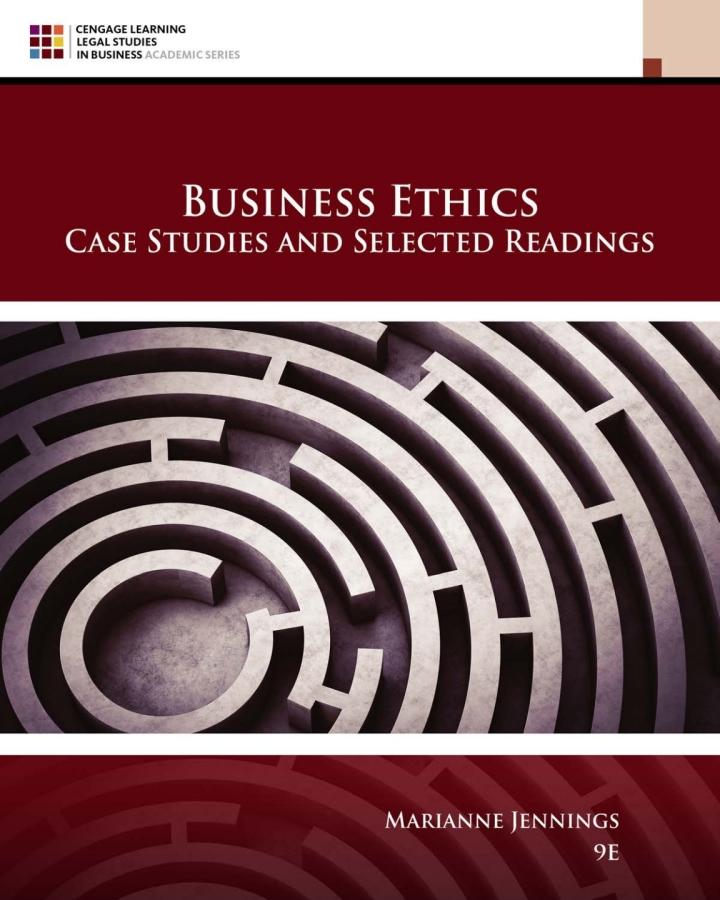In March 1990, Bill Foley, research manager for Herman Miller, Inc., began a routine evaluation of new
Question:
In March 1990, Bill Foley, research manager for Herman Miller, Inc., began a routine evaluation of new woods to use in the firm's signature piece--the \$2,277 (the 1990 cost) Eames chair. The Eames chair is a distinctive office chair with a rosewood exterior finish and a leather seat, and was sold in the Sharper Image's stores and catalog.
At that time, the chair was made of two species of trees: rosewood and Honduran mahogany. Foley realized that Miller's use of the tropical hardwoods was helping destroy rain forests. Foley banned the use of the woods in the chairs once existing supplies were exhausted. The Eames chair would no longer have its traditional rosewood finish.
Foley's decision prompted former CEO Richard H. Ruch to react: "That's going to kill that [chair]." 198 Effects on sales could not be quantified.
Herman Miller, based in Zeeland, Michigan, and founded in 1923 by D. J. DePree, a devout Baptist, manufactures office furniture and partitions. The corporation follows a participatory-management tradition and takes environmentally friendly actions. The vice president of the Michigan Audubon Society noted that Miller has cut the trash it hauls to landfills by \(90 \%\) since 1982: "Herman Miller has been doing a super job." \({ }^{199}\)
Herman Miller built an \(\$ 11\) million waste-to-energy heating and cooling plant. The plant saves \(\$ 750,000\) per year in fuel and landfill costs. In 1991 , the company found a buyer for the 800,000 pounds of scrap fabric it had been dumping in landfills. A North Carolina firm shreds it for insulation for automobile roof linings and dashboards. Selling the scrap fabric saves Miller \(\$ 50,000\) per year in dumping fees.
Herman Miller employees once used 800,000 Styrofoam cups a year. But in 1991, the company passed out 5,000 mugs to its employees and banished Styrofoam. The mugs carry the following admonition: "On spaceship earth there are no passengers ... only crew." Styrofoam in packaging was also reduced \(70 \%\) for a cost savings of \(\$ 1.4\) million.
Herman Miller also spent \(\$ 800,000\) for two incinerators that burn \(98 \%\) of the toxic solvents that escape from booths where wood is stained and varnished. These furnaces exceeded the 1990 Clean Air Act requirements. It was likely that the incinerators would be obsolete within three years, when nontoxic products became available for staining and finishing wood, but having the furnaces was "ethically correct," former CEO Ruch said in response to questions from the board of directors. \({ }^{200}\)
Herman Miller continued to pursue environmentally safe processes during this period, including finding a use for its sawdust byproduct. However, for the fiscal year ended May 31,1991 , its net profit had fallen \(70 \%\) from 1990 to \(\$ 14\) million on total sales of \(\$ 878\) million.................
Discussion Questions 1. Evaluate Foley's decision on changing the Eames chair woods. Consider the moral standards at issue for various stakeholders.
2. Is it troublesome that Miller's profits were off when Foley made the decision?
3. Is Herman Miller bluffing with "green marketing"? Would Albert Carr (Reading 2.3) support Herman Miller's actions for different reasons?
4. Why would Herman Miller decide to buy equipment that exceeded the 1990 Clean Air Act standards when it would not be needed in three years?
5. During 2008-2012, Herman Miller went through a slump in sales and earnings but retained its sustainability focus. Despite advice from shareholders and experts, the company refused to cut costs by eliminating some of its green programs. Did the sustainability focus help the company with its sales and profits?
6. Discuss the layoffs of employees and stakeholder theory.
Step by Step Answer:

Business Ethics Case Studies And Selected Readings
ISBN: 9780357453865
9th Edition
Authors: Marianne M. Jennings





